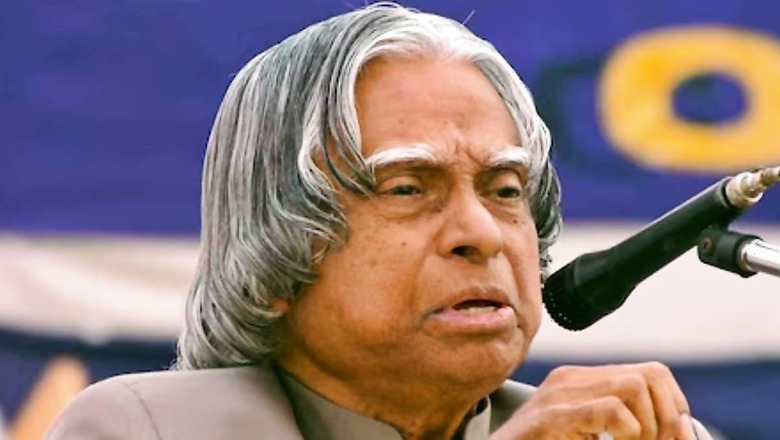
views
Avul Pakir Jainulabdeen Abdul Kalam, often referred to as Dr APJ Abdul Kalam, was a Former President, renowned Indian scientist, engineer, and statesman who had a lasting impression on both his country and the rest of the world as a whole. He was born on October 15, 1931, in Rameswaram, Tamil Nadu, and climbed from humble beginnings to become one of India’s most adored and revered individuals. He was given the moniker “Missile Man of India” due to his exceptional career trajectory, and as the 11th President of India, he continued to motivate his fellow citizens with his vision for a prosperous and self-sufficient India.
Kalam spent nearly forty years of his life working for the DRDO and tragically passed away on July 27, 2015, while giving a speech in Shillong, as a result of a heart attack.
Educational Background
Kalam was the youngest of four siblings and hailed from a poor Tamil Muslim household. His mother, Ashiamma, was a homemaker, while his father, Jainulabdeen, was a boat owner. APJ Abdul Kalam’s academic journey began in Rameswaram, where he received his early education. He completed his schooling at the Schwartz Higher Secondary School in Ramanathapuram. Despite his family’s limited financial standing, Kalam excelled in his education due to his desire to gain knowledge. He was a voracious reader and was always curious about what was going on in the world at large.
Once he had finished his schooling, Kalam joined Saint Joseph’s College in Tiruchirappalli to pursue a degree in physics. In 1954, after finishing his undergraduate education, he enrolled at the Madras Institute of Technology (MIT) to study aerospace engineering. Kalam demonstrated his intelligence and intellect while he was a student at MIT, which drew the attention of both his teachers and peers.
Kalam at DRDO
After earning his degree from the Madras Institute of Technology in 1960, Kalam joined the Defence Research and Development Organisation’s Aeronautical Development Establishment as a scientist. Kalam was transferred to ISRO in 1969, where he oversaw the launch of India’s first satellite vehicle.
The DRDO programme Kalam designed in 1982 resulted in a number of effective missiles, earning him the moniker “Missile Man.” One of these accomplishments was Agni, India’s first intermediate-range ballistic missile, which was launched in 1989 and used elements of the SLV-III.His achievements in science and space exploration are unparalleled, thus explaining precisely why he was awarded the Padma Vibhushan in 1990 and the most prestigious Bharat Ratna in 1997.
Abdul Kalam served as India’s President from July 25, 2002 until July 25, 2007. He was affectionately known as the ‘People’s President,’ and he actively devoted himself to the betterment of the younger generation. His presidency was a result of a landslide win in the 2002 presidential election, in which he won by a sizable majority.




















Comments
0 comment